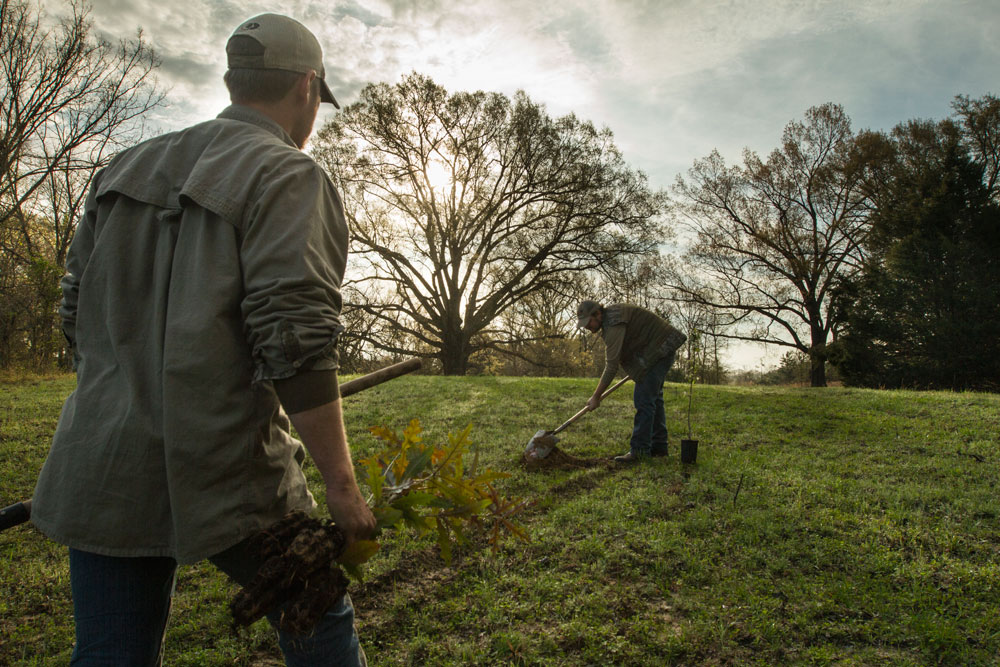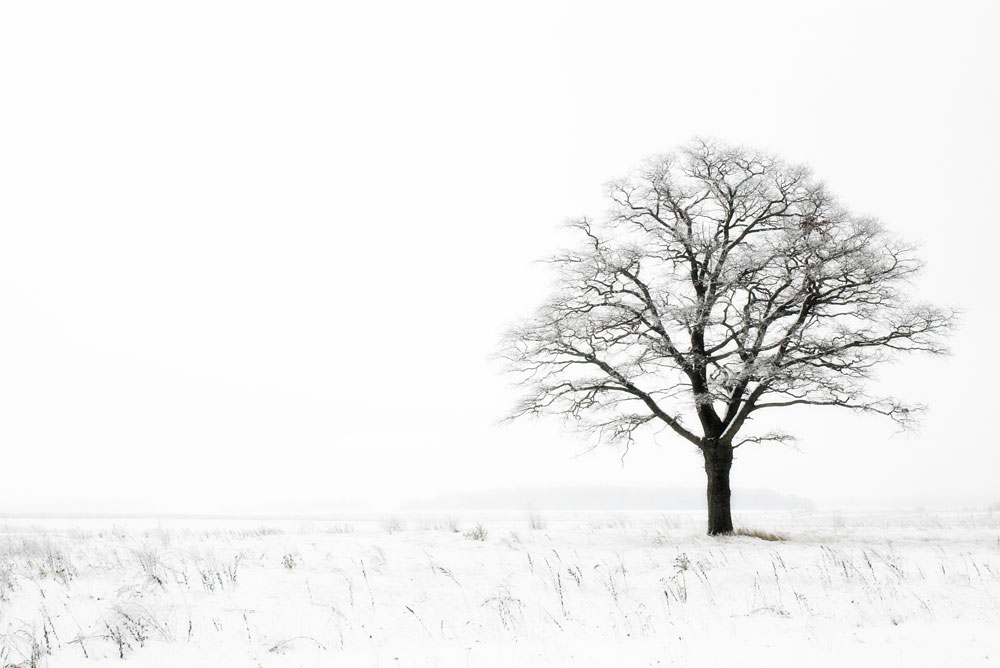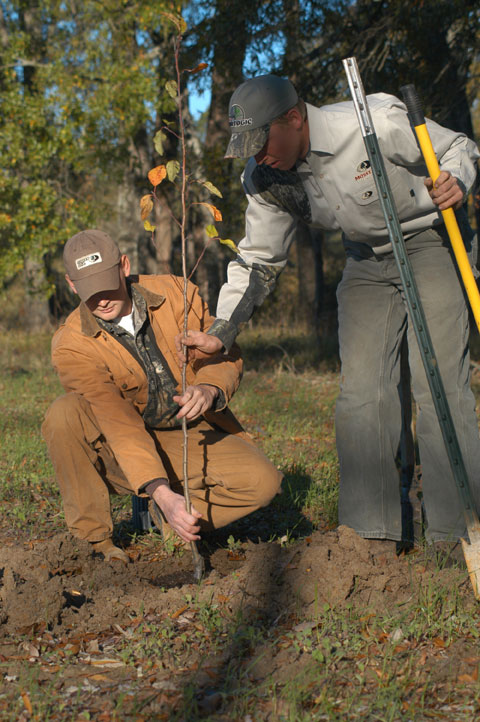Planting a tree is a significant decision. You’re taking small steps to change your immediate environment for the better and working to build a more complex ecosystem—time of planting, placement, and soil quality all help to determine the success of your tree.
Many people wonder if planting trees in winter is worth the time and effort. The answer is a tentative yes, but whether or not planting in winter is ultimately a good idea depends more on the soil temperature and the conditions rather than the name of the season.

Set Your Goals
Before you ask yourself what kind of tree you’re going to plant or when you’re going to plant it, consider your overall goals. Are you trying to improve native browse for whitetails? Are you trying to attract more birds? Or do you simply want to plant a beautiful tree?
Do some research and determine your overall goals and what type of tree or trees work best for your needs.
Growing Roots and Soil Temperature
Planting trees has more to do with the soil temperature than the season. Trees and shrubs need approximately six weeks to put down roots before a heavy freeze. Before you plant your tree, monitor soil temperature closely.
Young tree roots need a warm and well-watered environment in order to thrive. Being planted in the ground and forming a healthy root network is a lot of work for a tree. It can’t do that work in frozen soil, and it would be hard for anyone to dig a sizable hole in a piece of earth that’s rock-solid.
If you’re in a state with predictable harsh and freezing winters like Maine or Montana, planting trees in the winter just isn’t feasible. Additionally, if you’re in an area that routinely sees temperatures dipping below 0°F, your sapling likely will not survive the elements.

In addition, different kinds of trees need different temperatures. As a general rule of thumb, deciduous trees—or trees that lose their leaves in the fall—can be planted in soil that has hovered around 50°F for several days.
Evergreens need to be planted in soil that’s been stable at 60°F. Unlike deciduous trees, which lose leaves and can focus all of their energy on putting down roots, evergreens need to devote some of their energy to sustain their needles.
This isn’t a hard-and-fast rule: It all depends on the individual species of tree. Do your research ahead of time. Some beautiful, decorative, deciduous trees like Japanese Maples tend to be even more sensitive to exposure and cold temperatures than evergreens.
If you purchase your trees from a nursery or greenhouse, ask the workers for any specific care instructions, and read any information that comes with the tree.
Zones
Planting trees in your backyard during winter can be a mild, enjoyable occasion or a frigid nightmare, depending on your location. The following is a breakdown of the agricultural zones and states where you can plant trees during the winter. Most states fall into zones 5-7, which makes fall the optimal tree-planting season. Knowing your zone can help you decide whether to plant in the fall, winter, or spring. It also takes into account states’ unique factors like rainy seasons.
- Florida: Zone 9-10. You can plant at any time of year but planting in the rainy season from May to October means more water for your tree and less work for you.
- Georgia: Zone 8-9. Late fall or winter planting stands a good chance of success.
- Alabama: Zone 8-9. Winter tree planting is ideal.
- Louisiana: Zone 8-9. Winter tree planting is your best bet.
- Tennessee: Zone 6-7. Depending on the year, the temperature, and where you live in the state, autumn or early winter is the best season.
Of course, also check the guidelines for the individual species you intend to plant.
The Benefits of Winter

When it’s appropriate to your zone and soil temperature, planting trees in winter helps them focus on putting down roots. Planting them at least six weeks before a heavy freeze helps them grow roots when they’re already focusing on rooting and preparing for winter. Any subsequent cold weather will, if the tree is healthy and well-cared for, actually “harden off” the tree and help them become stronger and hardier.
Plan Your Planting
Remember to look ahead into the weather forecast and plant your sapling at the most opportune time possible. You don’t want your new tree to get buried under a blizzard, but you want your sapling to enjoy as much natural rain as possible.
Finally, remember that soil quality and tree placement are just as, if not more, important than when you choose to plant your tree. Make sure your tree will receive the light and shade it requires, be aware of the pH levels your tree will do best in, and check your soil’s pH. Fertilize or enhance the soil, keeping in mind that fertilizers can alter the soil’s pH. Read up on the depth of the hole to dig to plant your tree; trees don’t like to be stuck deep in a hole like a tomato. The trunk flare at its base should be above ground level.
Consider enhancing the soil with dung, compost, and other nutrient-dense materials. You can even use coffee grounds around the base of the tree to encourage it to grow lush and full. Include a phosphoric fertilizer if you choose to use coffee grounds. It’s important to balance your tree’s nitrogen and phosphorus intake as per its pH requirements if you choose the route of fertilization and soil enhancement.
The Takeaway
Planting a tree is a significant undertaking, and there are many factors to consider if you want to work toward maximum success. Some people will have time to monitor soil pH and fertilizer and water their sapling religiously. Others will simply want to know that the soil is suitable, that the tree is receiving adequate light, and that it stands a decent chance of thriving. There’s no right or wrong way, so long as you do your research. May your tree bring you and your family joy for years to come.



























